The Blood of the bull
This week: Sangria de Toro; August fruits; Another Hawk Moth species; Smoke and fire; Looking back;
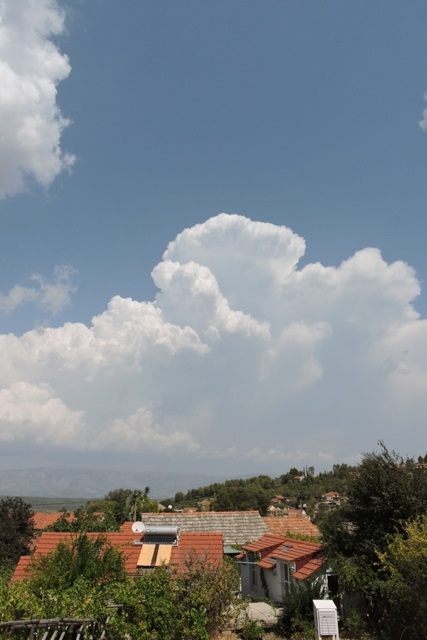
It has been hot again this week. However maybe, just maybe, we have turned the corner of this summer’s heatwaves.
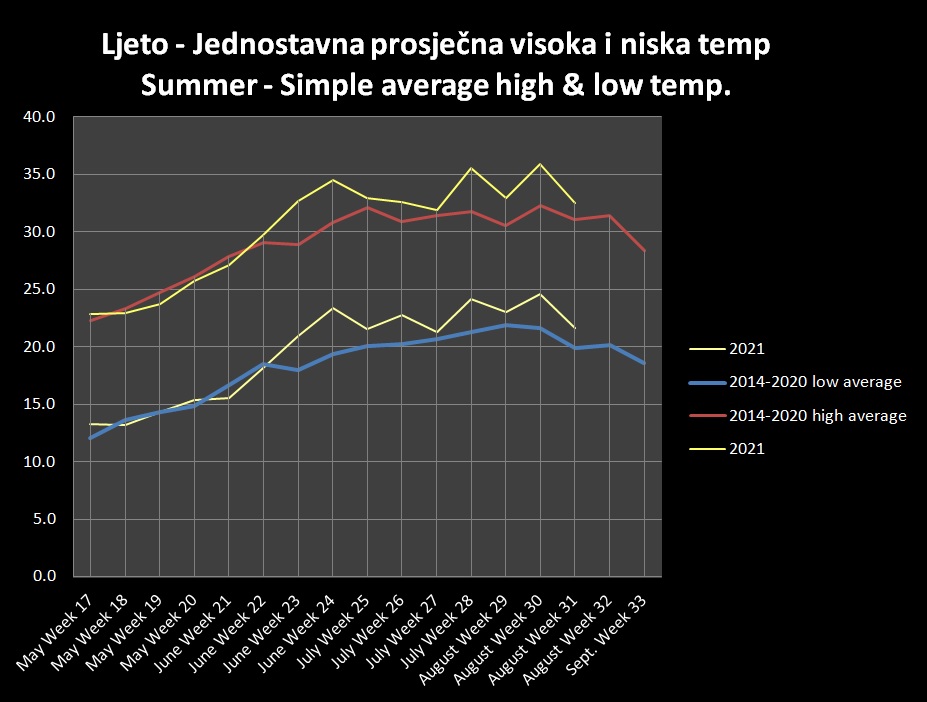
Friday and today were actually pleasantly cool and there seems to be a slight change in the weather. Cool is of course ‘relative‘, it is 32ºC at the moment instead of 37ºC.
On Saturday morning I was able to work in the Top Orchard until 11:30, when the temperature in the shade reached 31ºC . Until the last couple of days it has been that temperature in the shade at 8am.
This change is entirely normal for this week of the year though, based on my past weather records. However we still have above the average temperatures!
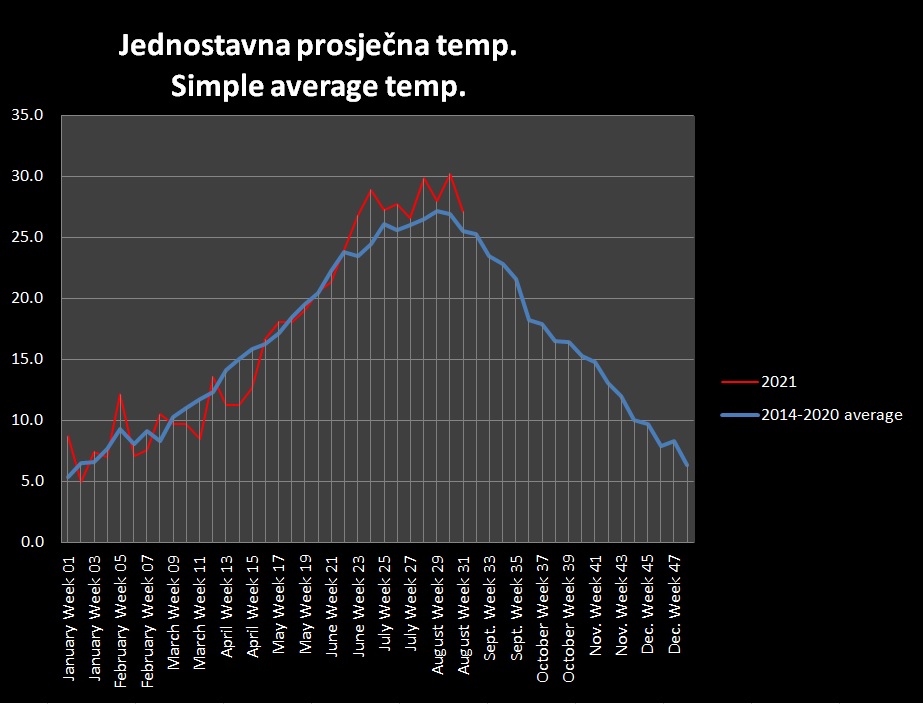
This past week, for the first time since I moved here, my weather station outdoor thermometer recorded four straight days when the temperature was 37ºC or more in the shade.
We had the hottest day of the year so far in Dol at 37.4ºC, the hottest temperature I have ever recorded, but only by 1/10 of a degree.
However, this is still the highest temperature, even though only by a small margin.
Sangria de Toro
One of my neighbours called this week with a couple of bottles of wine.
There is a thriving informal local exchange system amongst neighbours, where whenever you have a surplus then it is shared with friends and neighbours.
I had been going through a recipe book and had come across one of my recipes from Spain for Sangria de Toro – Blood of the Bull.
So the gift seemed like a good opportunity to put everything together…
Every region of Spain has it’s preferred recipe for Sangria, a cold drink to be enjoyed on hot summer nights.
Local fruits are used to imbue the wine with additional flavours, whatever fruits happens to be in season, with perhaps some spices added too.
The wine is poured over the fruit, some sugar is added and then the mixture is refrigerated to allow flavours to mingle. It is usually served mixed with sparkling mineral water.
Here in Dol, the concept of mixing water with wine is well understood. Local wine is usually delivered in plastic 1½ litre drinks bottles.
At restaurants it of course comes in nice glass bottles. But in the interests of expediency, plastic works fine, door to door.
Mixing wine and water
White wine is offered mixed with sparkling water, and it has its own term, Gemischt – an Austrian word simply meaning “mixed”. This no doubt dates from the days of the Austro-Hungarian empire who ruled Dalmatia until 1918.
Red wine is never mixed with sparkling water. Instead it is watered down 50/50 or there abouts with still water, in what is called “buvanda”.
Until I moved here I had never come across the concept of watering down very good wine. Now I understand though.
The locally produced red wine is about twice the strength (or more) of a red that you would get in a bottle from your local supermarket or off-licence.
In winter I often make “Gluwein“, another Germanic winter treat, served hot on cold winter nights. My friends looked somewhat askance when I first served it. But it is just another way of serving local produce.
I’ll not be telling them that I am adulterating yet more perfectly good wine to make Sangria! So please keep it to yourself…
I started with some two litre IKEA sealed top jars, two oranges, two lemons, two apples all from the orchards, two tablespoons of soft brown sugar and some cinnamon stick.
A lemon and orange were zested then squeezed and then split half into each jar with the juice.
The remaining lemon, orange and apples were sliced and quartered and layered on the bottom of the jars, followed by a tablespoon of brown sugar and a piece of cinnamon.
The red wine was poured over and the top sealed, then the jars were put in the fridge for 24 hours.
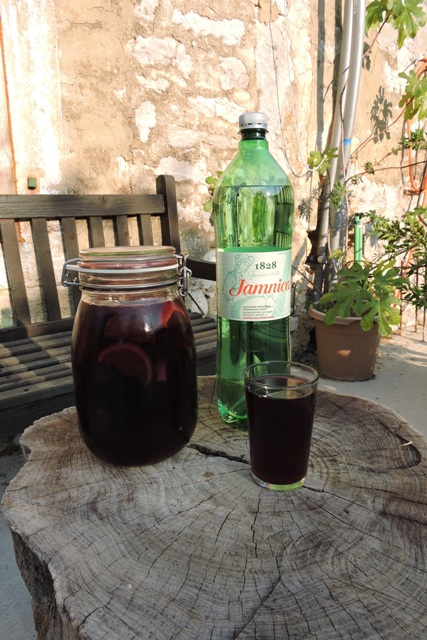
What more could you want on a warm August night but a long, cold sparkling drink.
I should add that red wine is part of the healthy Mediterranean diet, as are citrus fruits. I tend to sleep exceedingly well after a glass before bed time. Zzzzzzz
August fruits
The table grapes are ready and already being picked from the vines. There are an abundant crop of figs this year too.

The local varieties of grape vines have thrived in this year’s dry heat, including the table grapes that I have around my home.

Understanding the making of wine is an artisan skill passed down between the generations of vintners.
One of my neighbours is regularly at his Konoba with his sons and grandson – a young teenager, all working on the task at hand.
From cutting Lavender just after flowering, to harvesting cherries, figs, honey, olives and their different varieties of grapes, everyone lends a hand.
Learning by doing is one of the best ways of learning and so the skills are passed down.
When I moved here I made the decision to not even attempt to make home made wine. I don’t have any of the required skills.
However growing citrus and drupes is something I can do and have managed quite well.
All about figs
Fig trees are another very deep rooted tree. My large tree is now above roof top height and I am picking the fruits from my first floor terrace.
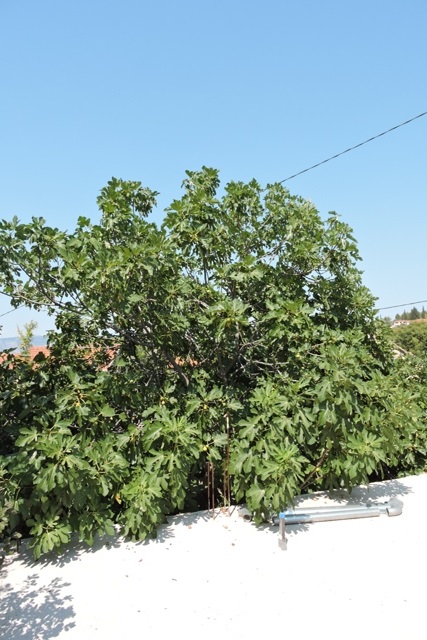
These are just Ficus carica, the basic common Mediterranean Fig, which has spread across the region since it escaped from the Garden of Eden.
It is known for having invasive roots and also for its longevity.
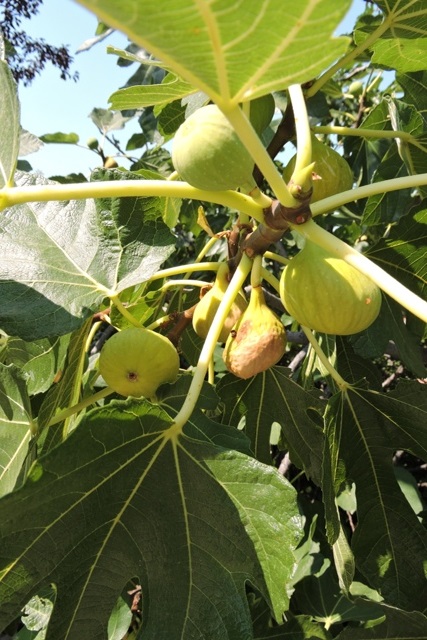
Birds eat the fruit and spread the seed, so every year I pull up seedlings with the familiar five lobed leaves, from where a seed has been deposited by a blackbird.
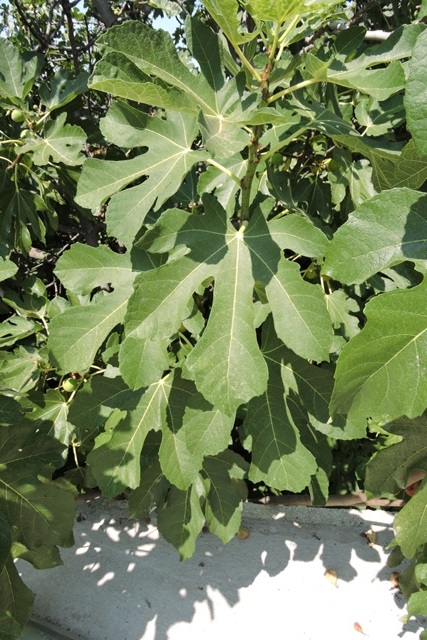
I have two other fig varieties. The Brown Turkey is larger and sweeter and also ripens later than the green Carica variety.
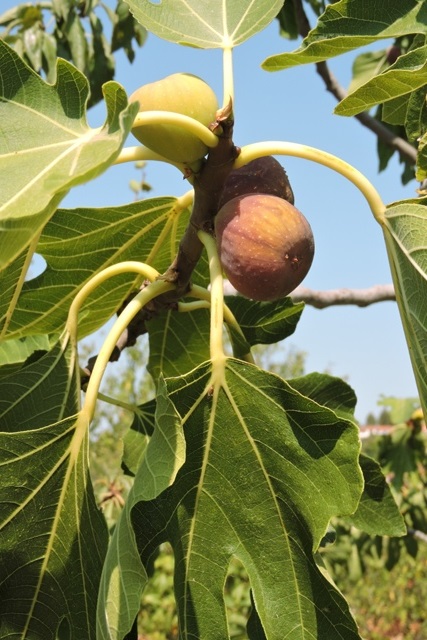

I also have a young Brunswick Fig, which is still in a pot.
Brunswick figs are large and pear shaped, and ripen to a deep purple colour.
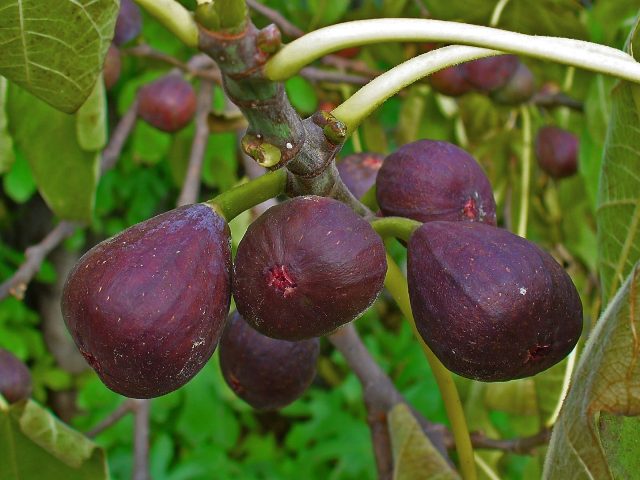
This will be planted in the drupe orchard in a lined pit, so that its root growth is restricted. That way it will produce more fruit than leaves and will not grow as tall as the “wild” green figs.
With a huge girth, my old fig will eventually have to come out, but I have some cuttings growing ready.
At less than a metre from my workshop, the main trunk is just too close to the building.
Another Hawk Moth species
As I was irrigating the citrus orchard on Saturday morning, some movement on the ground caught my eye.
There was a large moth with broken wings on the ground. I wondered whether it had been caught by a feline, but I think probably not.
Rescuing it, there were some ants already crawling over it, even though it was still alive, but only just.
I brushed the ants off and it began fluttering its wings, but they were too broken for it to fly.
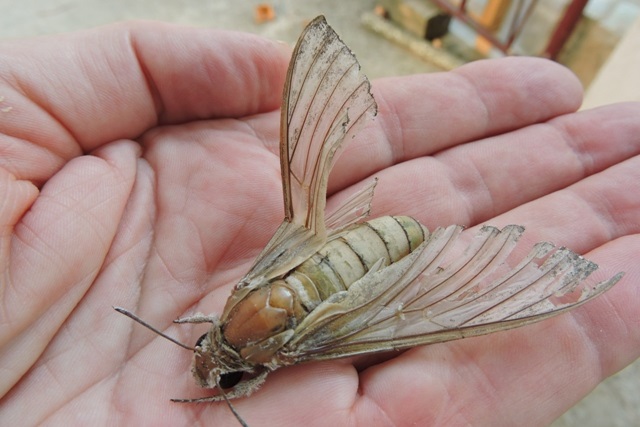
I put it in a quiet corner so that at least it would die peacefully in the dark rather than being eaten alive in the sun.
It is clearly a hawk moth of some kind but I wonder if it is old and its colours have faded. I certainly can’t find it in any of my books.
The transparent wings are unusual, as are the regular dark lateral stripes across its pale body. There are different types of “Bee hawk moth” but this doesn’t match any of the photographs in my books or on-line.
A little later in the morning when I checked, it had died.
One insect that I instantly recognised when one of the felines brought it in as a “present” for me, is this Cicada, also deceased.

They are still chirping away in the trees from dawn to dusk, but not in the numbers that we hear in high summer.
It is just another sign of the ever advancing natural calendar as we head into autumn.
When I checked on the sweet cherry tree that has been losing its leaves, they are all now gone.
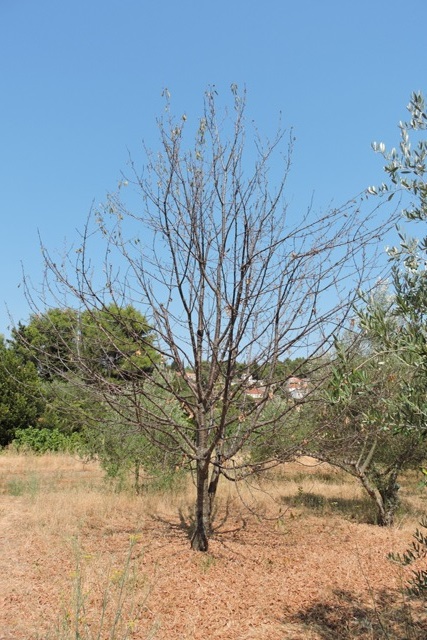
I will be watching this tree to see what happens when we eventually get some autumnal rains and of course next spring.
I hope it is just a response to this year’s heat and that it has not succumbed to the drought.
Smoke and fire
I was awake early on Thursday morning, around 04:30.
In full summer there is an “Alpenglow” across all the northern horizon at this hour, but we are two months past mid summer, so although my body clock wakes me, it is still dark outside.
Looking out of the window I could see cloud obscuring the stars. The moon had set before midnight so it was dark, but still with enough light to make out the cloud sheet.
I had some work to do online, a bit of research and the usual emails. There was also the September PMCC magazine to finish and give a final proof read to.
Outside there was total silence. The bush crickets had finished their chirping and the Cicadas hadn’t started.
A pleasantly cool breeze wafted through my open windows.
Three of the felines joined me. Senior cat Callie was less than impressed that Bljsac was on HER perch, atop the hifi on the top book-shelf.
Pongo, who knows his place in the feline pecking order, was out of paw reach by the door as I hammered away at the keys.
By 05:30 dawn was breaking. Sunrise is not until 06:05, but there are the distant Dinaric Alps and the hill called Hum to the east, at 207 meters, more than 100 meters above my Dol house and between me and the rising sun.
The grey cloud sheet was still moving to the east and I thought there might be the chance of a really nice sunrise, so readied my camera.
I was out by 05:45 and up the hill behind my home by six, on an old path.
I thought then that the cloud looked very much like smoke. But perhaps a little too thick and there was no tell-tale smell. There again, it was too thin for any stratus cloud that I know of.
Sunrise came and went but there was no spectacular coloured disply on the clouds. Just the felines who had joined me on my walk, swinging from the young olive trees (please don’t tell the owner who they were!).
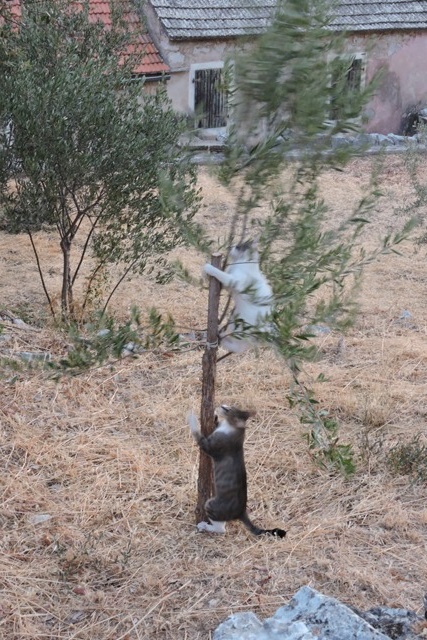
I went back to doing the usual mundane morning chores until just before seven when I heard the familiar drone of Canadair water bombers, and close too.
They were just out of sight to the west. I could see that the low “cloud” had shifted 90 degrees and it was now clear it was smoke from a large fire.
Arrival of the water bombers
I counted three Canadairs, just by their distinctive deep, growling engine noise.
Big Canadair CL415’s have two Pratt & Whitney PW123AF engines which make the aircraft capable of scooping 6,100 litres of water from the sea, lake or river each trip and then dropping it with precision onto inaccessible fires.
A quick search on the internet found several local news and TV reports. The fire was on hills around an unoccupied bay to the west of Stari Grad.
It had started around 22:30 on Wednesday and “sources” were saying the cause was people on a moored yacht letting of rockets. Utter idiots!
Every fire appliance in the west of Hvar had been deployed, together with more than 50 firefighters. The only station remaining available was at Sućuraj, 65 kilometres to the east, at the very eastern tip of the island.
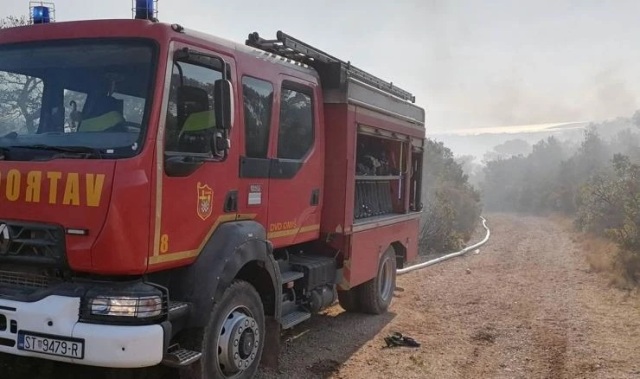
Additional appliances and crews had been brought across from the mainland on an overnight ferry but it was the arrival of the Canadairs that turned the tables on the fire.
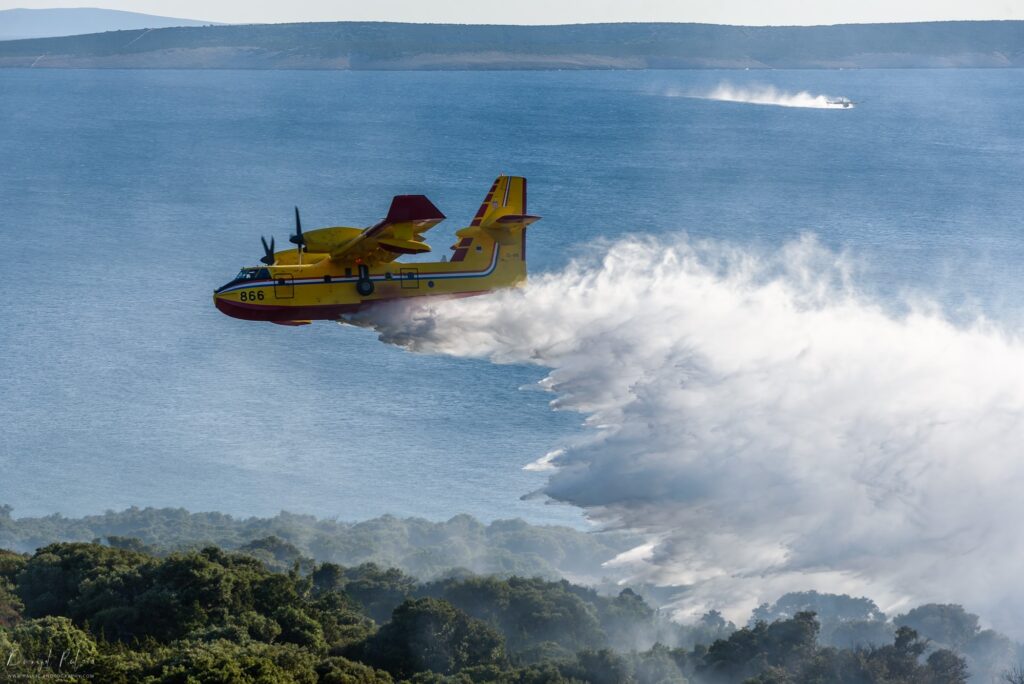
The fire had been extinguished by late afternoon.
On Friday the media reported that the Policija had arrested a 23 year old male from Split, who was responsible for setting off the flares and he had been lodged at the main police station in Split, charged with various offences.
Sadly though, the invisible damage is to the insects, birds, wildlife, trees, rare orchids, everything – the whole ecosystem. No trees means runoff if/when we get heavy rain. 😿
It will take years, running into decades for this Karst ecosystem to self repair and regenerate.
With that in mind, and this week’s blog safely “put to bed” I’m going to retire to the terrace to watch the sun disappear behind the hills and to enjoy a glass of something red and fruity with friends…NCG
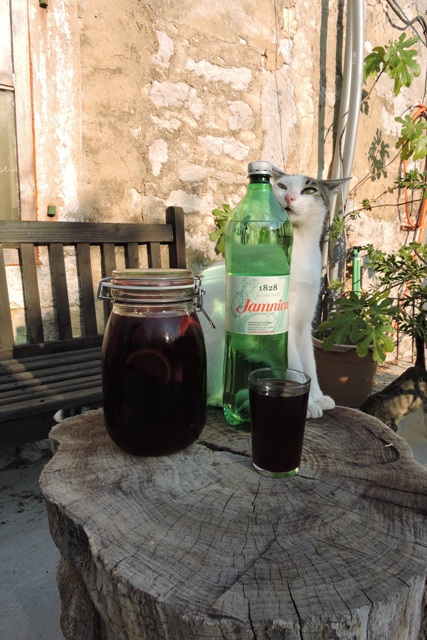
Looking back – Week 33
This is the start of a new weekly section, with links to past issues of the blog.
2014/33 You know you are making progress when…
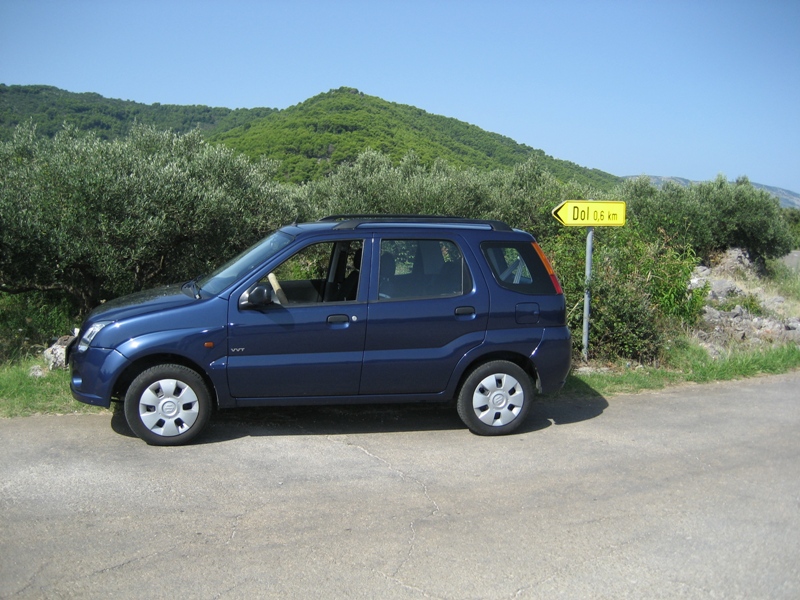
2015/33 Advancing seasons
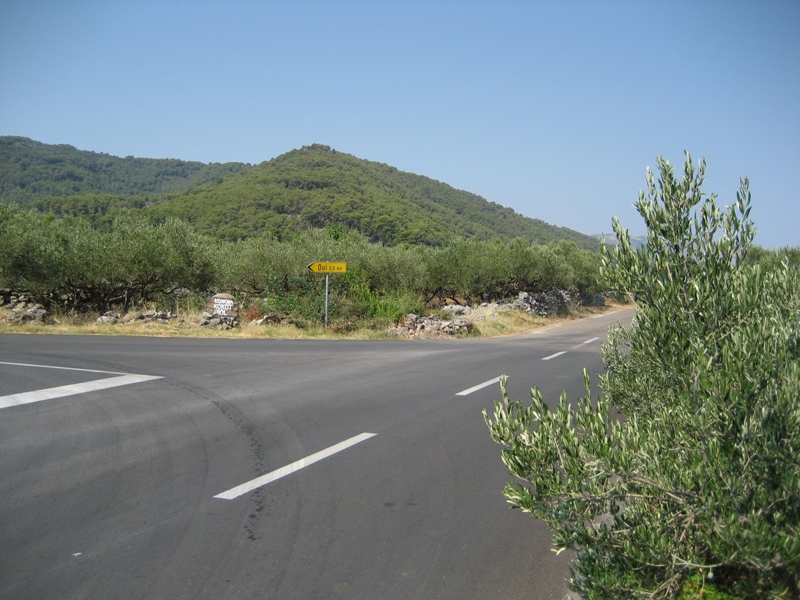
2016/33 One man went to mow…
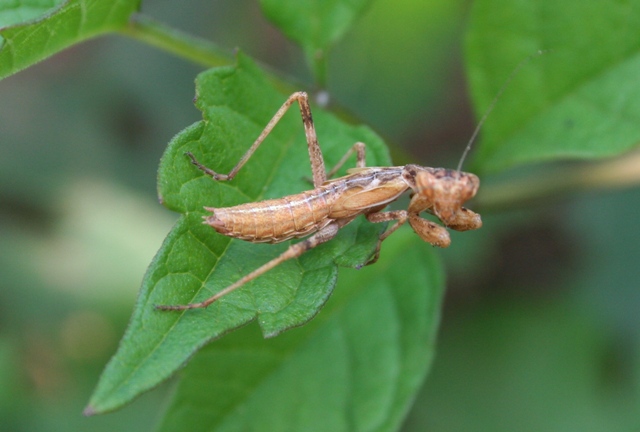
2017/33 Autumn is here
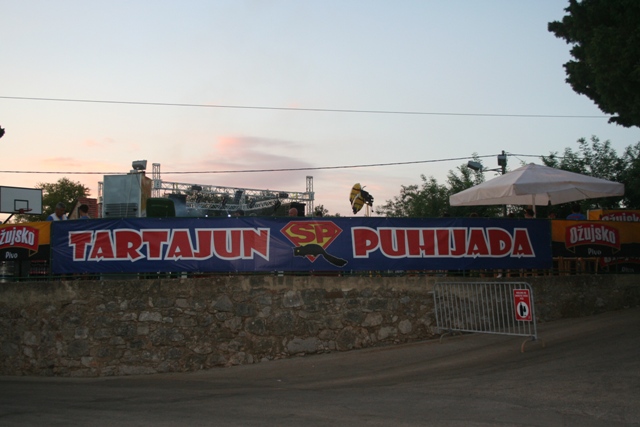
2018/33 It’s that time of year
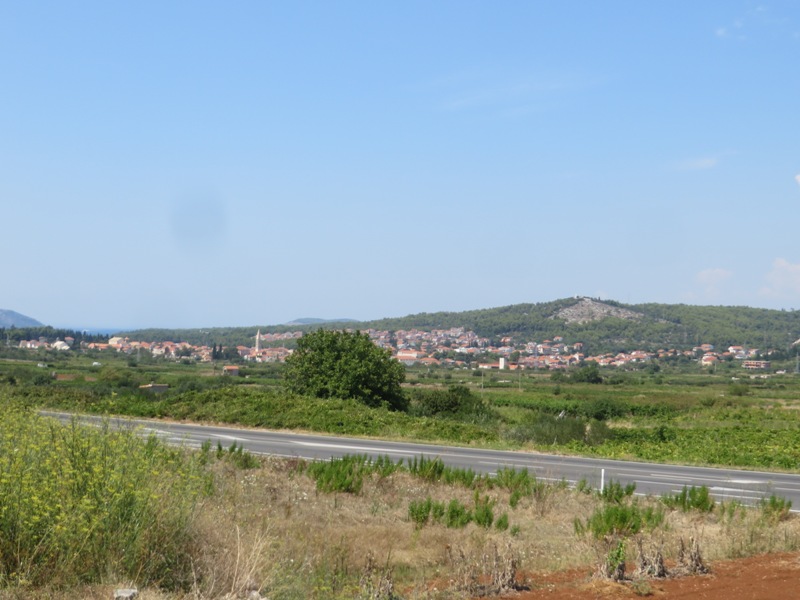
2019/33 Thinking of Christmas

2020/33 Moonstrike
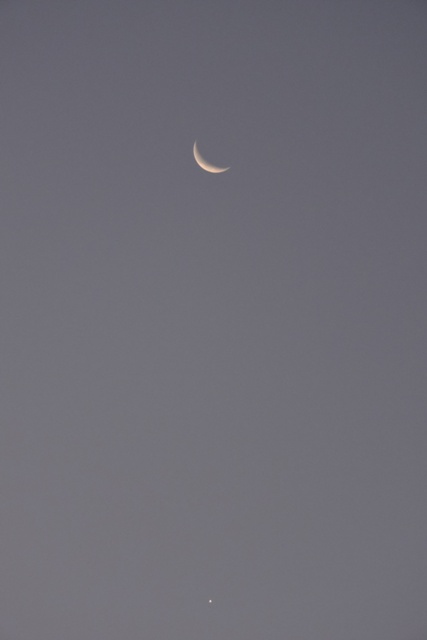
One Response
Marcy Fletchall
As always a lovely and informative blog. Thank you. Here we are suffering the Delta COVID resurgence. It’s so crazy. Weather here has been on right on target. Hot cool warm in that order but fall is coming and I can hardly wait.
I’ve started a business blog and will send you an invite. No need to join if you have no interest; however pointers would be helpful if you have any.
Take care and stay safe. Fires in the mountains in CO and CA are killing everything in its path. Tragic. The other outcome is the smoke particles which include toxins from burnt cars and appliances, etc., can invade a person through their eyes, nose, and mouth. Once in the lungs it weakens the immune system making one very susceptible to COVID. Mask up if the smoke comes your way.
Take care and thank you for always including me. Marcy